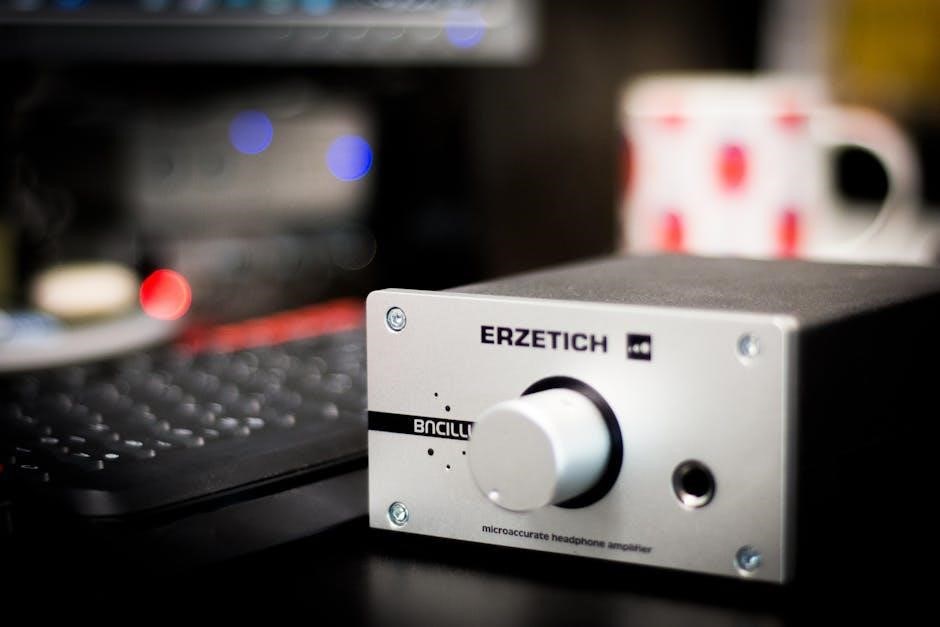
Hi-Yield 2,4-D is a selective herbicide effective against broadleaf weeds in lawns, pastures, and non-crop areas. Proper mixing ensures safe, targeted weed control without harming grass.
1.1 Overview of Hi-Yield 2,4-D Selective Weed Killer
Hi-Yield 2,4-D Selective Weed Killer is a widely used herbicide designed to control broadleaf weeds in lawns, pastures, and non-crop areas. It contains 11.84% dimethylamine salt of 2,4-D, making it effective against species like dandelions and clover. This selective formula targets broadleaf weeds while leaving grass and other desirable plants unharmed. Ideal for lawns, ditches, and grasslands, it is a popular choice for both professionals and homeowners. Proper mixing and application are crucial for optimal results and safety. Always follow the product label for specific instructions to ensure effective weed control and minimize environmental impact.
1.2 Importance of Proper Mixing Instructions
Proper mixing of Hi-Yield 2,4-D is crucial for effective weed control and safety. Incorrect ratios can lead to underperformance or damage to desirable plants. Over-mixing may harm grass, while under-mixing reduces efficacy. Always follow the product label to ensure the right balance. Proper mixing prevents environmental contamination and optimizes results. Adhering to guidelines safeguards people, pets, and the ecosystem. Accurate measurements are key to achieving desired outcomes without risks.

Mixing Ratios for Different Applications
For spot treatment in non-crop areas, use 1 pint in 3 gallons or 4 oz in 3/4 gallon. Pastures require 3-4 oz in 1-3 gallons per 1,000 sq. ft.
2.1 Spot Treatment in Non-Crop Areas
For spot treatment in non-crop areas, mix 1 pint of Hi-Yield 2,4-D in 3 gallons of water. Alternatively, use 4 ounces in 3/4 gallon for hand sprayers. This concentration effectively targets broadleaf weeds while minimizing overspray. Ensure thorough coverage by spraying weeds until dripping. Avoid application during windy or rainy conditions to prevent drift. Always follow the product label for precise measurements and safety guidelines. This method is ideal for controlling weeds in areas like fences, ditches, and unplanted spaces. Proper mixing ensures optimal results and reduces the risk of damaging desirable plants or the environment.
2.2 Mixing for Pastures and Range Land
For pastures and range land, mix 3 to 4 oz of Hi-Yield 2,4-D in 1 to 3 gallons of water per 1,000 sq. ft. This ratio ensures effective control of broadleaf weeds while maintaining grass health. Adjust the water volume based on application method and weed density. Always follow the product label for precise measurements to avoid over-application, which could harm desirable vegetation or the environment. Proper mixing is crucial for safe and efficient weed management in large open areas like pastures and rangelands.
2.3 Ornamental Turf Mixing Guidelines
For ornamental turf, mix 16 oz of Hi-Yield 2,4-D with water to cover 1,000 square feet. Use 1 to 3 gallons of water depending on application method. Ensure even coverage to avoid over-application, which may harm desirable plants. Always follow label instructions for precise rates to maintain turf health and effectiveness against broadleaf weeds; Adjust mixing ratios based on weed density and turf type for optimal results. Proper mixing ensures targeted weed control while protecting ornamental grasses and landscapes.
2.4 Lawn Treatment Mixing Ratios
For lawn treatments, mix Hi-Yield 2,4-D at a rate of 2.5 oz per gallon of water to cover approximately 400 square feet. This concentration effectively targets broadleaf weeds while protecting grass. Ensure the solution is well-mixed before application. For larger areas, maintain the ratio by scaling the mixture accordingly. Always refer to the product label for precise instructions, as over-application can harm desirable plants. Proper mixing ensures optimal weed control and minimizes potential risks to your lawn. Adhere to the recommended guidelines for safe and effective results.

Equipment and Application Methods
Use hand sprayers, backpack sprayers, or tank sprayers for application. Ensure proper calibration and follow manufacturer guidelines for effective weed control and safety.
3.1 Hand Sprayer Mixing Instructions
For effective weed control using a hand sprayer, mix Hi-Yield 2,4-D according to the product label. In a hand sprayer, combine 4 ounces of the herbicide with 3/4 gallon of water. Fill the sprayer with water first, then add the recommended amount of 2,4-D. Shake the sprayer thoroughly to ensure the solution is well-mixed. Apply the mixture evenly to target weeds, ensuring complete coverage. Avoid over-mixing, as this can lead to excessive chemical use. Always apply during calm weather to prevent drift. This ratio ensures optimal weed control while minimizing potential harm to desirable plants. Follow all safety guidelines for handling and application.
3.2 Backpack Sprayer Mixing Guidelines
For backpack sprayer use, mix 4 oz of Hi-Yield 2,4-D with 3/4 gallon of water. This ratio ensures effective weed control while maintaining safety for grass. Fill the sprayer with water first, add the herbicide, and mix well. Avoid over-mixing, as it may reduce efficacy. Apply evenly, covering the target area thoroughly. For larger areas, adjust the mixture proportionally, but always follow the recommended ratio. Ensure the sprayer is calibrated to deliver the correct volume per acre or square foot. Avoid spraying during windy or rainy conditions to prevent drift and runoff. Always refer to the product label for specific guidelines and safety precautions.
3.3 Tank Sprayer Mixing Ratios
For tank sprayers, Hi-Yield 2,4-D mixing ratios vary by application. Use 3 to 4 oz of product per 1 gallon of water for spot treatments in non-crop areas. For larger areas, mix 1 pint (16 oz) in 3 gallons of water to cover up to 1,000 square feet. Always adjust the ratio based on the target weed species and growth stage. Ensure thorough mixing before and during application to maintain uniformity. Refer to the product label for precise guidelines tailored to your specific use case to avoid under- or over-mixing, which can affect efficacy and safety.

Safety Precautions and Protective Gear
Wear gloves, goggles, and a mask when handling Hi-Yield 2,4-D. Avoid skin contact and inhalation of spray mist. Ensure proper ventilation and keep bystanders away during application.
4.1 Personal Protective Equipment (PPE)
When handling Hi-Yield 2,4-D, it is essential to wear appropriate Personal Protective Equipment (PPE) to minimize exposure risks. This includes long-sleeved shirts, long pants, closed-toe shoes, and chemical-resistant gloves. Additionally, wear protective eyewear, such as goggles, and a dust/mist respirator to prevent skin and eye contact. Avoid wearing clothing that may become contaminated with the herbicide. After use, wash all clothing thoroughly and bathe to ensure no residual product remains. Proper PPE use ensures safe handling and application of the herbicide, protecting both the user and the environment from potential harm.

4.2 Safety Measures During Mixing and Application
When mixing and applying Hi-Yield 2,4-D, wear protective equipment such as gloves, goggles, and a long-sleeved shirt. Avoid breathing spray mist and ensure good ventilation. Keep the product away from water sources to prevent contamination. Prevent drift by spraying when wind is calm and avoiding sensitive plants. Double-check the label for specific precautions and follow all guidelines to minimize exposure and environmental impact. Proper safety practices ensure effective weed control while protecting people, pets, and the environment.

Environmental Considerations
Avoid water contamination by keeping Hi-Yield 2,4-D away from ponds and water sources; Prevent drift by spraying when wind is low to minimize overspray onto non-target areas.
5.1 Avoiding Water Contamination
Avoiding water contamination is crucial when using Hi-Yield 2,4-D. Ensure the product is mixed and applied away from water sources, including ponds, lakes, and irrigation systems. Drift or overspray can contaminate water bodies, harming aquatic life. Never spray when wind direction could carry the herbicide toward water. Keep the product and mixed solution away from wells, rivers, and drainage areas. Avoid using contaminated water for mixing, as it can spread pollutants. Always wear personal protective equipment to prevent accidental ingestion or skin contact. Follow label guidelines to protect water resources and ensure safe, effective weed control.
5.2 Preventing Drift and Overspray
Preventing drift and overspray is crucial to avoid unintended damage to desirable plants and water sources. Apply Hi-Yield 2,4-D on calm days with wind speeds below 10 mph. Use low-drift nozzles and maintain a spray pressure of 20-40 PSI to minimize droplet formation. Avoid spraying during temperature inversions or when plants are under stress. Keep the sprayer 12-18 inches above the target area to reduce drift. Do not spray near water bodies or sensitive crops. Always follow label guidelines for buffer zones and application timing to ensure environmental safety and effective weed control.

Application Timing and Techniques
Apply Hi-Yield 2,4-D during early morning or late afternoon for optimal results. Use a fine spray to cover weeds evenly, avoiding drift onto desirable plants.
6.1 Optimal Time for Application
The optimal time to apply Hi-Yield 2,4-D is during active weed growth, typically in early spring or late summer/early fall. Avoid application during extreme heat, drought, or when weeds are under stress. Early morning or late afternoon applications are ideal to minimize drift and ensure better absorption. For best results, apply when weeds are in the seedling to flowering stage. Avoid spraying if rain is expected within 24 hours, as this can reduce effectiveness. Timing is critical to ensure the product works effectively without harming desirable plants. Always follow label guidelines for specific timing recommendations based on your location and target weeds.
6.2 Spray Techniques for Effective Coverage
For effective coverage, use a flat-fan nozzle at 20-40 PSI, maintaining a 12-18 inch spray height. Spray evenly, avoiding overlap or excessive application. Apply when weeds are actively growing, typically during early growth stages. Avoid spraying in strong winds or when plants are wet to prevent drift. Ensure thorough coverage of target areas without overspray. Calibrate equipment to maintain consistent application rates. Proper technique minimizes waste and ensures optimal weed control while protecting desirable plants. Always follow label guidelines for best results and environmental safety.

Storage and Disposal
Store Hi-Yield 2,4-D in a cool, dry place, away from children. Dispose of unused product and containers according to local regulations and environmental guidelines.
7.1 Proper Storage of Hi-Yield 2,4-D
Proper storage of Hi-Yield 2,4-D is essential to maintain its effectiveness and safety. Store the product in its original container, tightly sealed, and in a cool, dry place away from direct sunlight. Avoid storing it near feed, food, or water sources to prevent contamination. Keep it out of reach of children, pets, and livestock to ensure safety. Do not store it in areas prone to moisture or temperature fluctuations, as this can degrade the product. Always follow the storage instructions on the product label and ensure the container is properly labeled. Proper storage helps preserve the herbicide’s potency and prevents accidental exposure.
7.2 Safe Disposal of Unused Product and Containers
Proper disposal of Hi-Yield 2,4-D and its containers is crucial to prevent environmental contamination. Always follow local regulations and product label instructions. Triple-rinse empty containers and dispose of them as hazardous waste. Unused product should be taken to a chemical waste collection facility. Do not pour leftovers into drains or waterways. Clean any spilled material thoroughly before disposal. Ensure all equipment is washed and free of residue. Proper disposal protects water sources and ecosystems from potential harm. Adhere to all safety guidelines to minimize environmental impact.

Troubleshooting Common Mixing Issues
Address over- or under-mixing by checking the product label and adjusting ratios. Ensure proper water volume for accurate concentration to avoid reduced effectiveness or plant damage.
8.1 Addressing Over- or Under-Mixing
Over- or under-mixing Hi-Yield 2,4-D can lead to ineffective weed control or potential harm to desirable plants. If over-mixed, reduce the concentration by adding clean water. For under-mixing, recalibrate equipment and remeasure product. Always follow label instructions to ensure proper ratios. Test the solution on a small area before full application to verify effectiveness and safety. If unsure, consult the product label or manufacturer for guidance to avoid repeated adjustments and ensure optimal results.
8.2 Solving Common Application Problems
Common issues during application include uneven coverage, insufficient weed control, or accidental drift. To address these, ensure the sprayer is calibrated correctly and nozzles are free from clogs. If weeds remain after treatment, check the mixing ratio and reapply as directed. Avoid spraying during windy or rainy conditions to prevent drift. For overspray, rinse affected plants thoroughly with water. Always follow the recommended mixing instructions to avoid under- or over-application. If results are inconsistent, consult the product label or seek professional advice. Proper technique and adherence to guidelines are key to resolving most application-related problems effectively.
Properly mixing Hi-Yield 2,4-D is crucial for effective weed control. Always follow the product label for precise ratios to ensure safety and optimal results. Correct usage prevents overspray and environmental harm, making it a reliable solution for broadleaf weeds. Refer to the label for detailed instructions and best practices.
9.1 Summary of Best Practices
For effective weed control with Hi-Yield 2,4-D, always follow the product label instructions. Use the recommended mixing ratios based on the application area, such as 1 pint in 3 gallons for non-crop spots or 3-4 oz in 1-3 gallons for pastures. Ensure proper mixing to avoid over- or under-application, which can harm plants or reduce efficacy. Wear personal protective equipment (PPE) like gloves and goggles during mixing and spraying. Avoid spraying during windy or rainy conditions to prevent drift and water contamination. Apply the product during optimal weather conditions, such as early morning or late afternoon, for best results. Proper storage and disposal are crucial to maintain safety and environmental health.
9.2 Final Tips for Effective Weed Control
For optimal results with Hi-Yield 2,4-D, always follow the product label instructions precisely. Apply during active weed growth, typically in spring or early summer, when weeds are most vulnerable. Ensure thorough coverage by using the recommended spray techniques and avoid drift onto desirable plants. Regularly inspect equipment for proper function and calibration. Store unused product securely to prevent contamination or accidental use. For challenging weed infestations, consider combining cultural practices like proper mowing and watering with chemical treatments. Lastly, consult local agricultural extension resources for region-specific advice to maximize effectiveness and safety.

References and Further Reading
Consult the Hi-Yield 2,4-D product label for detailed mixing instructions and safety guidelines. Additional resources include agricultural extension offices and the manufacturer’s official website.
10.1 Product Label and Manufacturer Guidelines
The product label for Hi-Yield 2,4-D provides essential mixing instructions and safety precautions. It specifies mixing ratios, such as 1 pint in 3 gallons of water for spot treatments or 3-4 oz in 1-3 gallons for pastures. The label also highlights the active ingredient, 11.84% dimethylamine salt of 2,4-D, and warns of potential harm if mishandled. Manufacturer guidelines emphasize proper application rates to avoid overspray and water contamination. Always follow the label for precise mixing instructions, safety measures, and environmental precautions to ensure effective and safe weed control. Refer to the label for detailed guidance tailored to your specific application needs.
10.2 Additional Resources for Weed Control
For comprehensive weed control, explore additional resources like the Hi-Yield 2,4-D product label and manufacturer guidelines. Online guides and tutorials offer step-by-step mixing instructions and application tips. Websites like agricultural extension services provide expert advice on weed management. Videos and forums share user experiences and troubleshooting tips. Always consult the product label for specific instructions, as mixing ratios and application methods may vary. Reputable sources ensure safe and effective use of Hi-Yield 2,4-D, helping you achieve optimal weed control while protecting your lawn and environment.